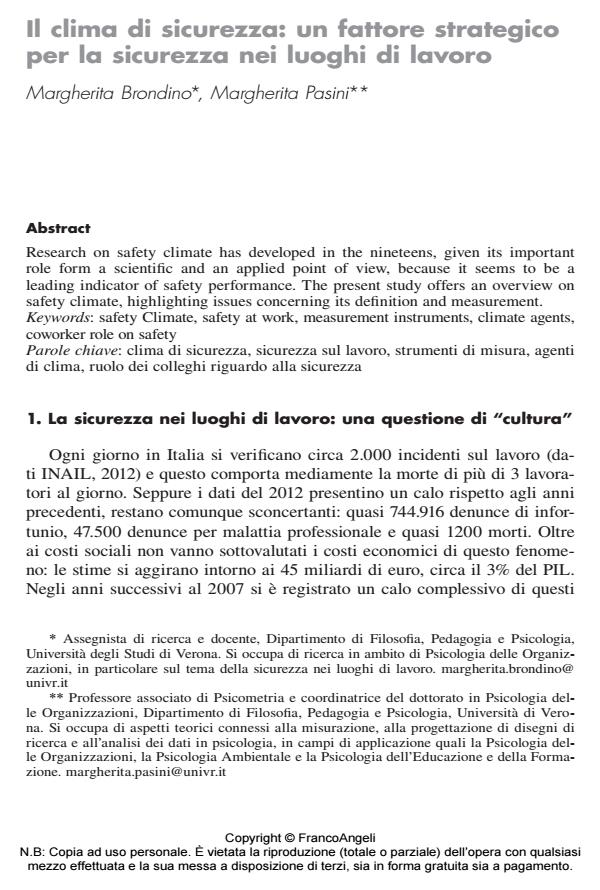Il clima di sicurezza: un fattore strategico per la sicurezza nei luoghi di lavoro
Titolo Rivista SICUREZZA E SCIENZE SOCIALI
Autori/Curatori Margherita Brondino, Margherita Pasini
Anno di pubblicazione 2015 Fascicolo 2015/1
Lingua Italiano Numero pagine 15 P. 50-64 Dimensione file 120 KB
DOI 10.3280/SISS2015-001005
Il DOI è il codice a barre della proprietà intellettuale: per saperne di più
clicca qui
Qui sotto puoi vedere in anteprima la prima pagina di questo articolo.
Se questo articolo ti interessa, lo puoi acquistare (e scaricare in formato pdf) seguendo le facili indicazioni per acquistare il download credit. Acquista Download Credits per scaricare questo Articolo in formato PDF

FrancoAngeli è membro della Publishers International Linking Association, Inc (PILA)associazione indipendente e non profit per facilitare (attraverso i servizi tecnologici implementati da CrossRef.org) l’accesso degli studiosi ai contenuti digitali nelle pubblicazioni professionali e scientifiche
Research on safety climate has developed in the nineteens, given its important role form a scientific and an applied point of view, because it seems to be a leading indicator of safety performance. The present study offers an overview on safety climate, highlighting issues concerning its definition and measurement.
Parole chiave:Clima di sicurezza, sicurezza sul lavoro, strumenti di misura, agenti di clima, ruolo dei colleghi riguardo alla sicurezza
Margherita Brondino, Margherita Pasini, Il clima di sicurezza: un fattore strategico per la sicurezza nei luoghi di lavoro in "SICUREZZA E SCIENZE SOCIALI" 1/2015, pp 50-64, DOI: 10.3280/SISS2015-001005